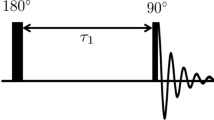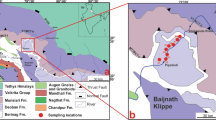This article explores the possibility of using samples with embedded glass capillaries of various diameters as rock-mimicking samples with a-priori known values of the absolute gas permeability coefficients. The measured values of the absolute gas permeability coefficient were compared with those obtained by theoretical calculation. The results of measuring the absolute gas permeability coefficient were obtained using the State primary standard of units of specific gas adsorption, specific surface area, specific pore volume, pore size, open porosity, and gas permeability coefficient of solid substances and materials (GET 210-2019). The theoretical values of the permeability coefficient were obtained by measuring the diameters of the capillaries using an optical microscope. Based on the values of these diameters, the permeability coefficients of the samples with capillaries were calculated according to the combined Poiseuille and Darcy equation. It was proved that the measurement results obtained with the use of GET 210-2019 are consistent with the theoretically calculated values of the permeability coefficient within the uncertainty limits. In accordance with the obtained data, the possibility of utilizing cylindrical samples with embedded glass capillaries for measuring gas permeability coefficients of solid substances and materials has been confirmed. The results of this research will be useful for oil and gas professionals, for example, when performing petrophysical studies and geological exploration.




Similar content being viewed by others
Notes
GOST 26450.2-85. Rocks. Methods for determination of absolute gas permeability coefficient by stationary and non-stationary fi ltration.
ASTM D 4525-90 (Reapproved 2001). Standard Test Method for Permeability of Rocks by Flowing Air (American Society for Testing and Materials).
Recommended Practices for Core Analysis, Recommended practice 40, American Petroleum Institute, 2nd edition, February 1998
Experimental Reservoir Engineering. Laboratory workbook. Department of Petroleum Engineering and Applied Geophysics, Norwegian University of Science and Technology.
GOST 34100.3-2017/ISO/IEC Guide 98-3:2008. Uncertainty in Measurement. Part 3. Guidance for expressing the uncertainty of measurement.
References
V. N. Kobranova, Petrofizika, Nedra, Moscow (1986).
E. P. Sobina, Meas. Tech., 63, No. 12, 927–939 (2021), https://doi.org/10.1007/s11018-021-01875-8.
L. J. Klinkenberg, The permeability of porous media to liquids and gases, Am. Petroleum Inst. Drilling and Production Practice, pp. 200–211 (1941).
M. Kazemi and A. Takbiri-Borujeni, Int. J. Coal Geology, 146, 188–197 (2015), https://doi.org/10.1016/j.coal.2015.05.010.
S. Wang, Y. S. Wu, and A. A. Lukyanov, Fuel, 235, 1275–1286 (2019), https://doi.org/10.1016/j.fuel.2018.08.113.
A. Okwananke, A. Hassanpouryouzband, M. Vasheghani Farahani, J. Yang, B. Tohidi, E. Chuvilin, V. Istomin, and B. Bukhanov, J. Petroleum Sci. Eng., 180, 435–444 (2019), https://doi.org/10.1016/j.petrol.2019.05.060.
I. P. Aronov and E. P. Sobina, Measurement Standards. Reference Materials, 17, No. 2, 5–18 (2021), https://doi.org/10.20915/2687-0886-2021-17-2-5-18.
I. P. Aronov, P. M. Aronov, and E. P. Sobina, Meas. Tech., No. 6, 67–72 (2022), https://doi.org/10.32446/0368-1025it.2022-6-67-72.
C. A. Grattoni, S. Allshorn, and Q. J. Fisher, Determining Gas Permeability in Tight Rocks: How do we Know if we are Obtaining the Right Value? International Symposium of the Society of Core Analysts held in Snowmass, Colorado, USA, 21–26 August 2016, paper SCA2016–010 (2016).
S. Sinha, E. M. Braun, Q. R. Passey, et al., SPE/EAGE European Unconventional Resources Conference & Exhibition — from Potential to Production, March 2012, cp-285-00034, https://doi.org/10.3997/2214-4609-pdb.285.spe152257.
Author information
Authors and Affiliations
Corresponding author
Additional information
Translated from Izmeritel’naya Tekhnika, No. 6, pp. 63–69, June, 2023. https://doi.org/10.32446/0368-1025it.2023-6-63-69.
Rights and permissions
Springer Nature or its licensor (e.g. a society or other partner) holds exclusive rights to this article under a publishing agreement with the author(s) or other rightsholder(s); author self-archiving of the accepted manuscript version of this article is solely governed by the terms of such publishing agreement and applicable law.
About this article
Cite this article
Aronov, I.P. Absolute Gas Permeability Coefficient of Samples with Embedded Glass Capillaries: Comparison of Measurement Results and Theoretical Calculations. Meas Tech 66, 439–446 (2023). https://doi.org/10.1007/s11018-023-02245-2
Received:
Revised:
Accepted:
Published:
Issue Date:
DOI: https://doi.org/10.1007/s11018-023-02245-2




